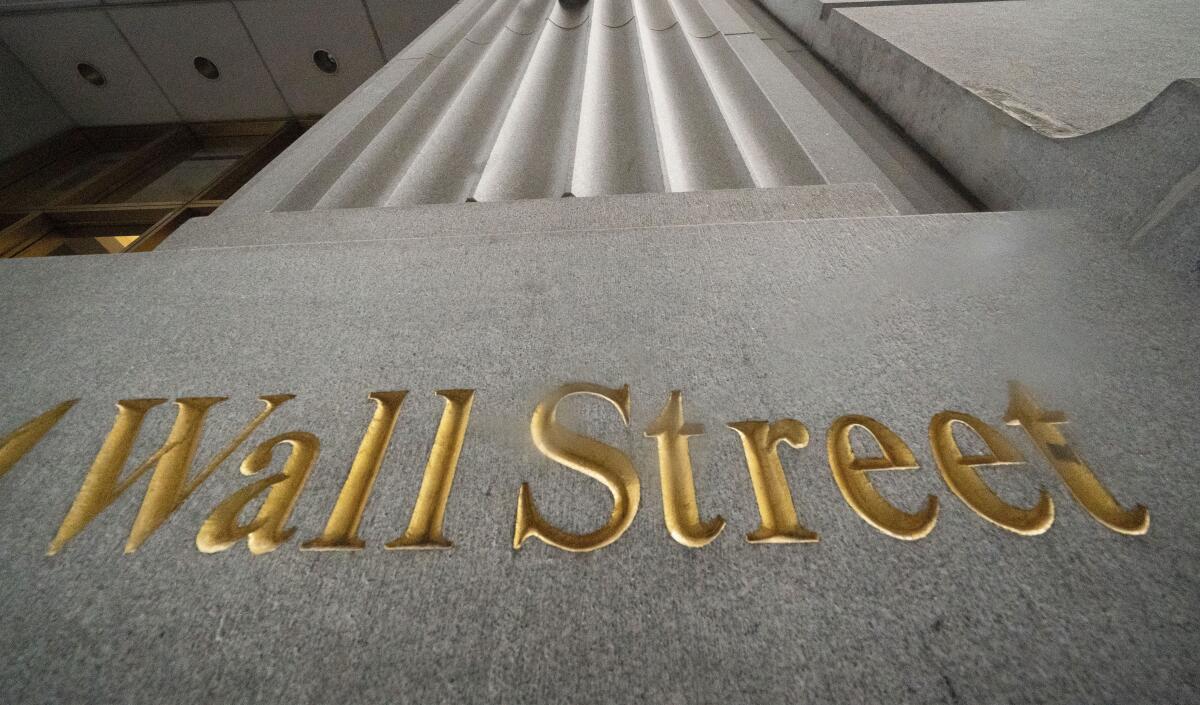Tech rebound pulls stocks out of a slump and to a weekly gain

Wall Street capped a volatile day of trading Friday with a broad rally that snapped the market’s three-day losing streak.
The Standard & Poor’s 500 index gained 2% after clawing back from a 1% skid that followed a 1% surge at the start of trading. Other stock indexes went through similar zigzags but finished with solid gains.
The late-afternoon turnaround made up for some of the losses that the market began racking up after kicking off the week with the S&P 500’s biggest gain since June. The index, which briefly slipped into the red for the year Thursday, managed to end the week 0.8% higher, its first weekly gain in three weeks.
The S&P 500 rose 73.47 points to 3,841.94. The Dow Jones industrial average gained 572.16 points, or 1.9%, to 31,496.30. Earlier, it had been down 157 points. The Nasdaq composite climbed 196.68 points, or 1.6%, to 12,920.15. The tech-heavy index earlier flipped between a gain of 1.2% and a loss of 2.6%.
Smaller-company stocks out-gained the broader market, as they have all year. The Russell 2000 index picked up 45.29 points, or 2.1%, to 2,192.21.
The spark for all the uncertainty Friday was a government report that showed employers added hundreds of thousands more jobs last month than economists expected. It helped lift Treasury yields, with the closely watched 10-year yield momentarily topping 1.60%.
The yield later fell back from that midday spike and wound up at 1.56%, only slightly higher than a day earlier. It remains well above its roughly 0.90% level at the end of last year.
While the jobs report was encouraging, wage growth — an inflation bellwether — rose last month in line with expectations. That may have helped ease some bond investors’ inflation worries, at least for now.
For about a year, the stock market kept climbing on expectations that an economic recovery was on the way, even when the COVID-19 pandemic meant conditions at the time seemed bleak. Now that the recovery is closer on the horizon, the market is unsettled because one of the main underpinnings for that incredible run is under threat: ultralow interest rates.
Yields have been marching higher with rising expectations for the economy’s growth and for the inflation that could accompany it. Economists have been upgrading their forecasts for this year as more people get COVID-19 vaccines, businesses reopen and Congress gets closer to pumping an additional $1.9 trillion of financial aid into the economy.
The worry is that inflation could take off, or something else could happen to jack up yields even further.
It’s the speed at which Treasury yields have climbed that has gotten Wall Street so uncomfortable, more than the actual level, which is still low by historical standards.
Higher bond yields put downward pressure on stocks generally, in part because they can steer away dollars that had been headed for the stock market. That makes investors less willing to pay as high prices for stocks.
The pressure is most intense on stocks that look the most expensive relative to their profits, as well as those bid up on expectations of fast growth far into the future. Critics say most stocks across the market look expensive after prices climbed much faster than profits, and warnings about a possible bubble have been on the rise.
Tech stocks and other high-growth companies in particular have been at the center of the downdraft. They soared more than the rest of the market for much of the pandemic, and in the years preceding it. On Friday, Tesla was the heaviest weight dragging on the S&P 500. The stock fell 3.8% and is now down 15.3% this year.
By Friday afternoon, the vast majority of stocks in the S&P 500 had rebounded. Energy producers made some of the largest gains. Diamondback Energy jumped 4.9%, and Chevron gained 4.3% after the price of U.S. crude oil rallied 3.5%.
Associated Press business writer Elaine Kurtenbach contributed to this report.
More to Read
Inside the business of entertainment
The Wide Shot brings you news, analysis and insights on everything from streaming wars to production — and what it all means for the future.
You may occasionally receive promotional content from the Los Angeles Times.










